4 Retail Holiday Marketing Stats You Should Know for 2020
Over 165 million consumers shopped between Thanksgiving and Cyber Monday in 2019, according to estimate, with online sales for Black Friday hitting an all-time high of $7.4 billion. And, that number will only rise over the week of the Christmas holiday.
To find out how retailers have spurred sales, we surveyed over 170 small to midsize U.S. retailers to understand which marketing channels they’re investing in this holiday season.
Key findings:
Social media emerges as the top and most used channel that retailers are employing to reach shoppers for holiday promotions; it also delivered the most return on investment (ROI) for recent marketing campaigns.
Email marketing comes in as a close second in terms of the most used channel and the channel that delivers the highest ROI. This is followed by in-store flyers and targeted online ads as ways that retailers are reaching out for their holiday promotions.
Offering discounts remains the top incentive to increase sales during the holidays, followed by coupons and deals on their most popular products.
When it comes to delivery of products, free delivery is the most offered tactic that retailers deploy over the holidays, followed by free returns and two-day delivery.
1. Social media is the number one channel for capturing holiday shoppers
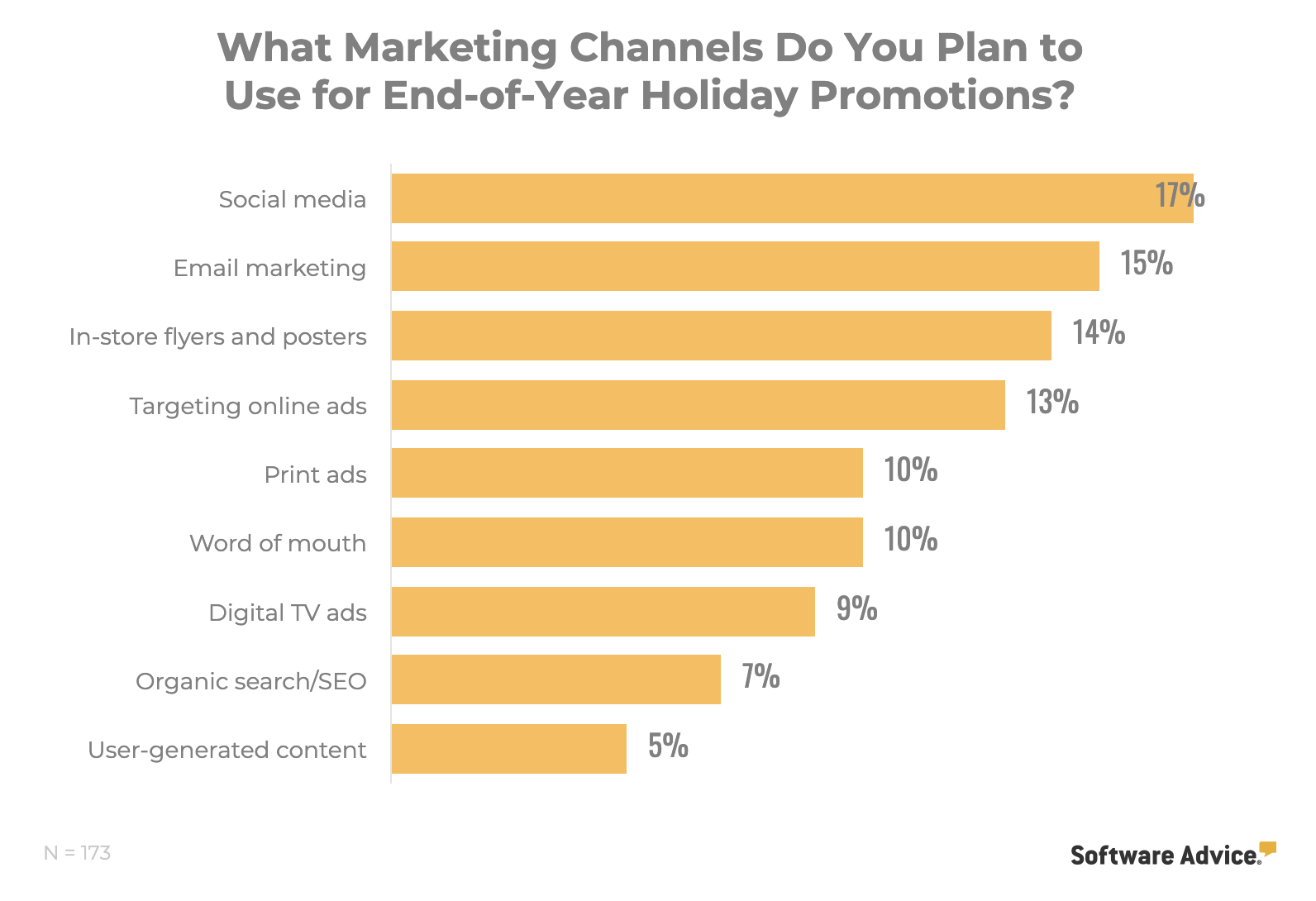
Our retailer respondents indicate that a majority of their marketing spend is on social media this holiday season. Retailers who have used social media say it has been the most effective channel for their most recent marketing campaign
Social media is the dominant marketing channel when it comes to attracting customers, generating engagement, and ultimately, driving sales during—and even outside—of the holidays.
Marketers are recognizing the effectiveness of social media. In 2018, companies spent nearly $27 billion on social media marketing and allocated 25% of their annual budgets to holiday social media marketing (primarily the four-day shopping period from Black Friday to Cyber Monday).
Other findings have also backed up the influence of social media. A study by digital marketing agency ODM Group found that 74% of consumers make purchasing decisions using social media.
Social media platforms such as Facebook, Instagram, and Twitter give businesses with a limited budget the ability to market to a wider customer base at a lower cost. And for consumers, these platforms provide easy access to brands to help guide and inform their purchasing decisions.
2. Email marketing is the second top performer for driving holiday sales
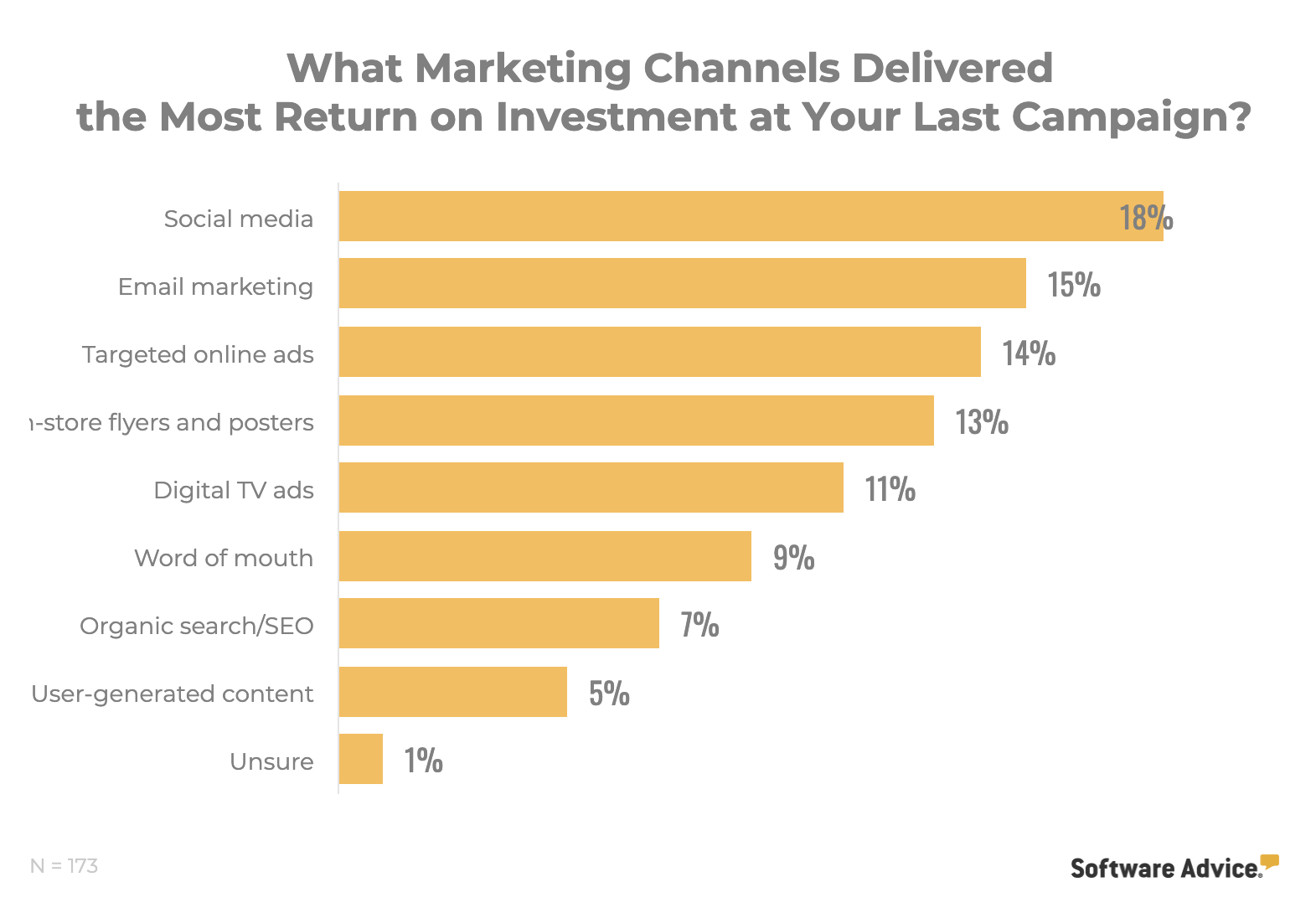
The effectiveness of email marketing is evident in the results of our survey as it comes in a close second to social media.
Email marketing also has a steady track record in terms of delivering a ROI. According to a study from the Data and Marketing Association (DMA), for every $1 spent on email marketing, businesses can expect an average return of $32.
A 2018 report from marketing automation platform Emarsys found that 80% of small and midsize businesses (SMBs) use email as their main customer acquisition and retention tool.
Additionally, over half of email subscribers spend 10 to 60 minutes browsing marketing emails during the week, which means businesses have an audience that is not just receptive to their products, services, and deals, but a customer base that is looking for those deals.
3. Discounts, coupons, and deals are most effective at driving purchases during the holidays
Unsurprisingly, offering deep discounts is the top strategies retailers use to compete and drive purchases during the holidays, followed by coupons and deals on the most popular products.
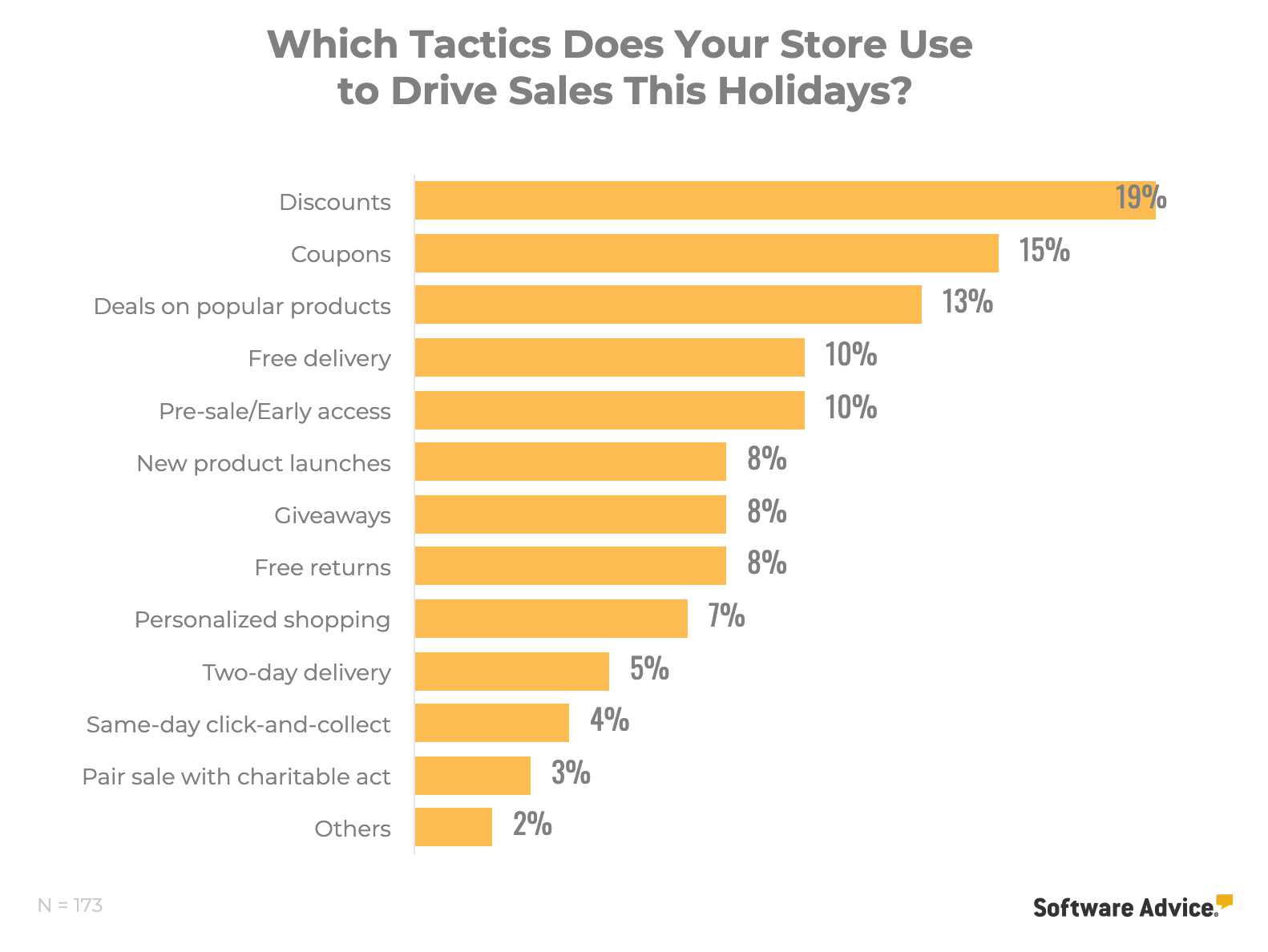
Sales, coupons, and deals continue to play an influential role in the purchasing decisions of shoppers during the competitive holiday season, especially because they’re purchasing more than normal.
According to a 2018 holiday survey by the NRF, 3 in 4 consumers report that sales and promotions are either very or extremely important to them. The majority of shoppers say a third or more of their purchases are discounted items.
The survey also found that an overwhelming 85% of consumers say they’ve backed out of purchasing an item because it wasn’t on sale, even if they really wanted it.
In addition to staying competitive, offering discounts is a great way to thank your loyal customers while serving to drive sales for the busiest and longest retail holiday season of the year.
4. Free delivery/shipping is a must during the holidays
Our survey found that free shipping is a requirement for consumers, while free returns is a key consideration and two-day delivery a differentiator.
Free shipping has become an expected gold standard by consumers during holiday promotions, and if it isn’t offered, they’ll be looking to a competitor for that incentive.

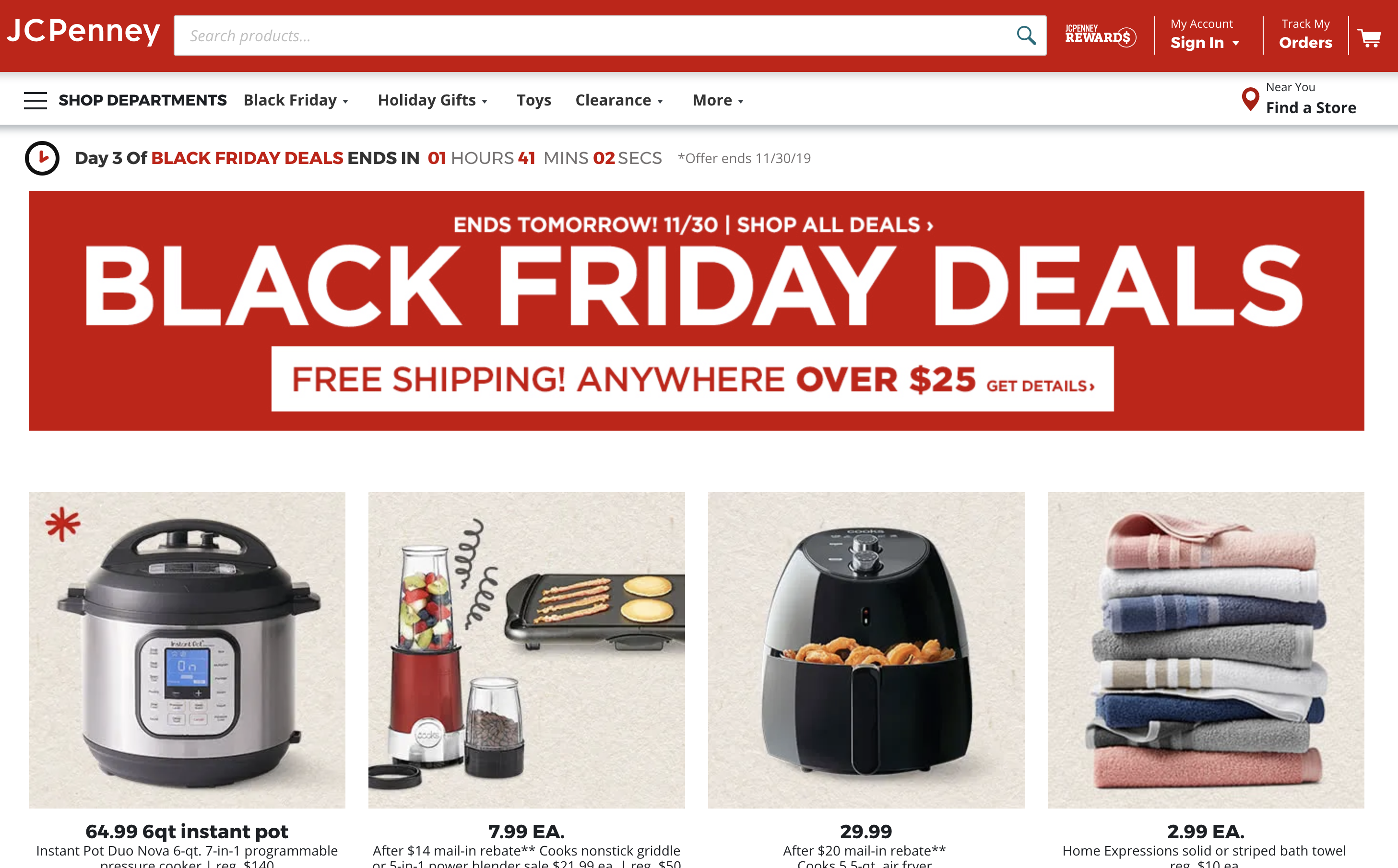
Wayfair and JCPenny drives free shipping on a minimum spend on Black Friday deals
A survey by Shippo found that 34% of shoppers will only buy a product from an online retailer if free shipping is provided. Correspondingly, a report from the NRF found that 75% of consumers surveyed expect delivery to be free even on orders under $50.
Online marketplace Etsy announced in July 2019 that it would give priority placement in search results to merchants and items that guarantee free shipping to shoppers in the U.S. on orders of $35 or more. That policy change indicates that Etsy, along with other online marketplaces, recognize how free shipping can boost sales.
When it comes to free returns, shoppers also expect a fast and hassle-free process. According to the NRF, 75% of shoppers check return policies before making a purchase, and 22% backed out of a purchase because they did not like the policy.
What to do for your next holiday promotions
Consider a blend of social media, email marketing, and online ads: Retailers have chosen to invest in these three channels to drive sales because of their proven effectiveness. If you’re ignoring any of these channels, you’re missing out on opportunities to reach potential and existing customers during this competitive retail holiday season.
Develop segments for your email list: Relevant messaging and targeted content is key to standing out from your competition and converting shoppers into buyers. This means creating customer segments through your point of sale (POS) software or customer relationship management (CRM) software and targeting them with tailored email content specific to their interests and past shopping habits.
Develop a social media campaign with a theme, hashtag, and user-generated content: Get into the spirit of the festivities with dedicated campaigns focused on retail holiday themes to showcase your promotions, such as Pottery Barn’s “12 days of gifting” guide below:
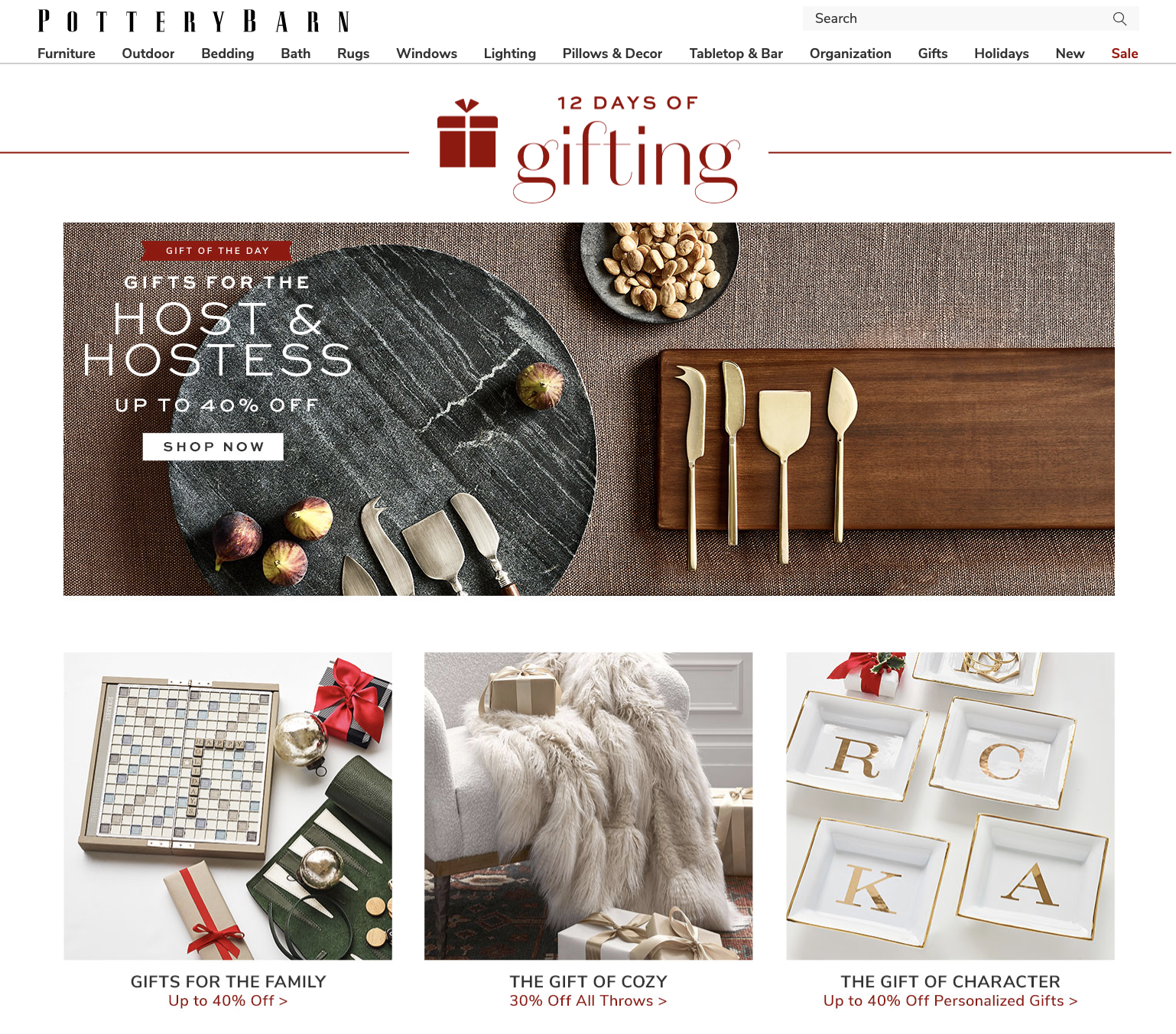
Pottery Barn counts down to Christmas with its “12 days of gifting” online guide (Source)
Campaigns should always be managed and tagged with hashtags to categorize and encourage shoppers to share user-generated content. After all, what better time than the holiday season for customers to do your marketing for you?
Determine your budget for paid ads, then segment accordingly: Pay-per-click advertising can get expensive quickly, so you’ll want to focus on the right channels.
Start by experimenting in the off-seasons to see which platforms your customers are on (Google Ads, Google Shopping, Facebook, Instagram), then ramp up on the most effective channels during the holidays. Be sure to create ads targeted at individuals within various demographics and locations, as well as those who have had previous interactions with your brand.
Plan your discounting strategy; offer free shipping and/or a flexible return policy: Discounts and coupons are a tried and true strategy of attracting customers to make a purchase, but you need a calculated pricing strategy that will not risk your bottom line during the holidays.
If free shipping isn’t part of your daily marketing strategy, consider offering flash free-shipping campaigns. For example, “Get free shipping if you spend over $50.” You’ll also want to offer flexible returns, such as “Receive a full refund if you return the product within 30 days.” It’s important to keep in mind that the recommended holiday marketing strategies listed above are applicable not just during the retail holiday season, but year-round as well.
Get a jumpstart on the year ahead, and find the right social media, email marketing, or customer management software with the help of our expert advisors. Simply schedule a quick 10 to 15 minute chat at a date and time of your preference or speak to one of our live chat advisors now.